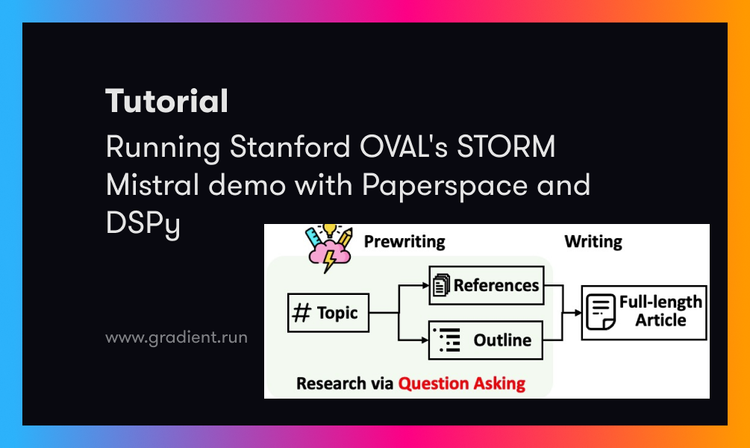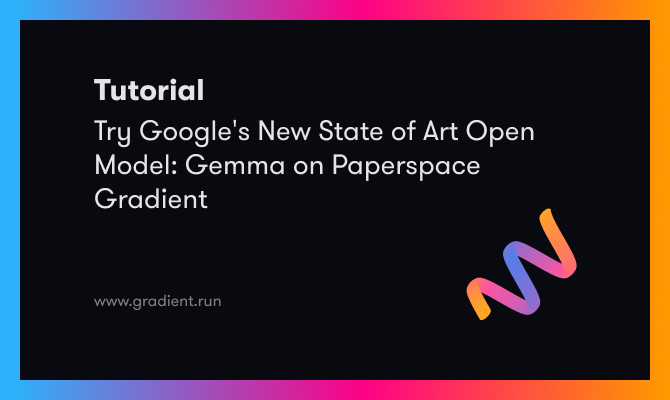These days many companies are using AI coding assistants to automate boilerplate code for product listings, allowing developers to work on more complex features. Recently, Devin (the world's first fully autonomous AI software engineer) was launched. It's designed to handle a wide range of coding tasks, from generating lines of code based on prompts to debugging, deploying applications, and even learning new technologies to solve novel challenges. Other examples of competent assistant AI in the world of closed-source products include Github's CoPilot Chat. But what about if we wanted to use an open-source alternative?
This article includes hands-on tutorial for implementing a LLM powered code assistant, using the open source model CodeLlama and executed on Paperspace Gradient. This model is available on HuggingFace.
You can ask questions to this code assistant, and it will answer in natural language with code snippets.
What is Code Llama?
Code Llama was released by Meta in August 2023. This model was built on the foundation of Llama 2 and is fine tuned specially for the purpose of generating the code. Initially, the model was developed by training Llama 2 on code-specific data sets. It is available for research and commercial use for free.
Prompts containing code or natural language can be provided at the model response by generating the code with the discussions about the code. Code Llama is a very helpful tool for developers and enhances their coding productivity. It supports most of the popular languages being used today, including Python, C++, Java, PHP, Typescript (Javascript), C#, and Bash.
Other Alternatives of Code Llama 7 B
This article has implemented a demo for building code assistants using Code LLaMa 7 B. But there are some other alternatives also for this model, which are listed below:
- Code Llama (and larger versions 13B, 34B, 70B) - It is recommended for code completion and code summarization
- Code Llama-Python (7B, 13B, 34B, 70B) - specializes in Python code generation and understanding. It is particularly useful for developers working with Python and PyTorch.
- Code Llama-Instruct (7B, 13B, 34B, 70B)-This is the preferred choice for code generation with Code Llama due to its focus on safe and informative responses.
Demo
First, set up the account on Paperspace. Choose the GPU and template according to the needs of the project. Select the auto-shutdown time. In this demo, you don't need any HuggingFace API key.
Installing dependencies
pip install transformers
from transformers import pipelineCreating the codegen_pipeline
# Load the codegen model
codegen_pipeline = pipeline("text-generation", model="codellama/CodeLlama-7b-hf")Defining the Prompt
# Define your prompt
prompt = """
# Write Python code to implement Random Forest algorithm with Scikit-Learn library
# Provide clear comments for each code section, explaining its purpose and functionality.
# Explain the code with proper explanation and its purpose
"""This prompt requests the generation of Python code implementing the Random Forest algorithm using the Scikit-Learn library, with comments explaining each section of the code.
Generating Code
# Generate code based on the prompt using beam search
generated_code = codegen_pipeline(prompt, max_length=400, temperature=0.7, truncation=True, num_beams=5)The parameters are as follows:
- max_length=400 - This limits the maximum length of the generated text to 400 tokens.
- temperature=0.7 - This controls the randomness of the output. A lower temperature results in less random outputs, making the model more confident but also more conservative in its generations.
- truncation=True - This ensures that if the model's output exceeds the max_length, it will be truncated to fit within this limit.
- num_beams=5 - This uses beam search with 5 beams for the generation process. Beam search is a strategy for generating text that keeps track of a fixed number of sequences considered most likely at each step, which can lead to higher-quality outputs.
# Print the generated code
for completion in generated_code:
print(completion['generated_text'])Future Enhancements in Coding Assistants
- Bug Detection and Prevention - Code analysis capabilities that identify potential bugs and vulnerabilities during generation could significantly improve code quality. Real-time analysis during generation can be implemented to identify syntax errors, logical inconsistencies, and potential security vulnerabilities.
- Security and Safety - Code assistants can be trained to recognize code patterns that could lead to security breaches or exploits.Code assistants can scan code for patterns that often lead to security vulnerabilities like SQL injection, buffer overflows, and cross-site scripting (XSS). By highlighting these potential issues, they prompt developers to review and rectify the code before deployment.
Code Assistant Statistics
By 2028, Gartner forecasts that 75 percent of enterprise software engineers will incorporate AI coding assistants into their workflows—a significant leap from the less than 10 percent reported in early 2023.
Adopting AI-coding assistants is already well underway, with 57 per cent of business and technology professionals acknowledging their organizations’ adoption.
According to Bain and Company
According to Bain and Company, 75 % of the adopters are satisfied with the AI coding assistants they are using.
Some Coding Assistants Product Examples
- Github CoPilot & CoPilot Chat - Github copilot is improving constantly and is the most famous code assistant in developer community.The latest version of GitHub Copilot has various features, including AI chatbot, code generation, autocomplete, nline chatbox, CLI autocomplete, and other GitHub-based features to help with code search and understanding.
- Codeium - Codeium provides a free solution for enhancing the development experience with intelligent autocomplete, AI chatbot, context-aware code generation, and more developer features. It is secure and provides a faster response similar to GitHub copilot.
- Blackbox AI - Blackbox AI is a coding assistant that helps developers write better code. It provides real-time suggestions for code completion, documentation, and debugging.
- Studio Bot - Studio Bot is based on a large language model (Codey, based on PaLM-2) very much like Bard. This makes it capable of offering a wide range of functionalities, including code generation, debugging, algorithm improvement, code completion, and API updates.
Closing Thoughts
AI-powered coding assistants are rapidly becoming essential tools. They automate tedious tasks and generate code, freeing AI developers for the creative aspects of software development.
This article explored the exciting world of code assistants, showcasing the power of Code Llama from Meta. We built a basic demo using Code Llama to generate Python code for a Random Forest algorithm!










